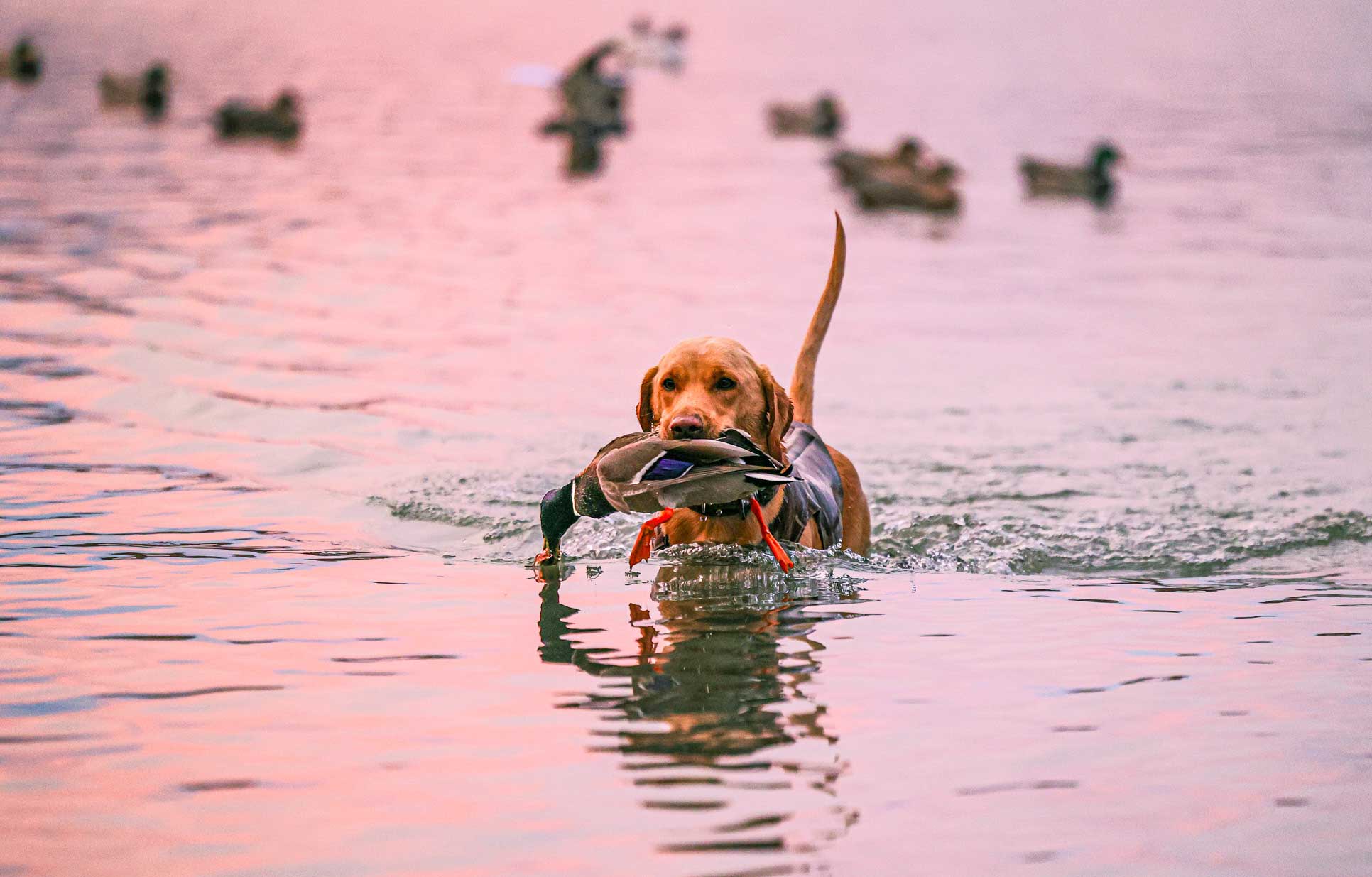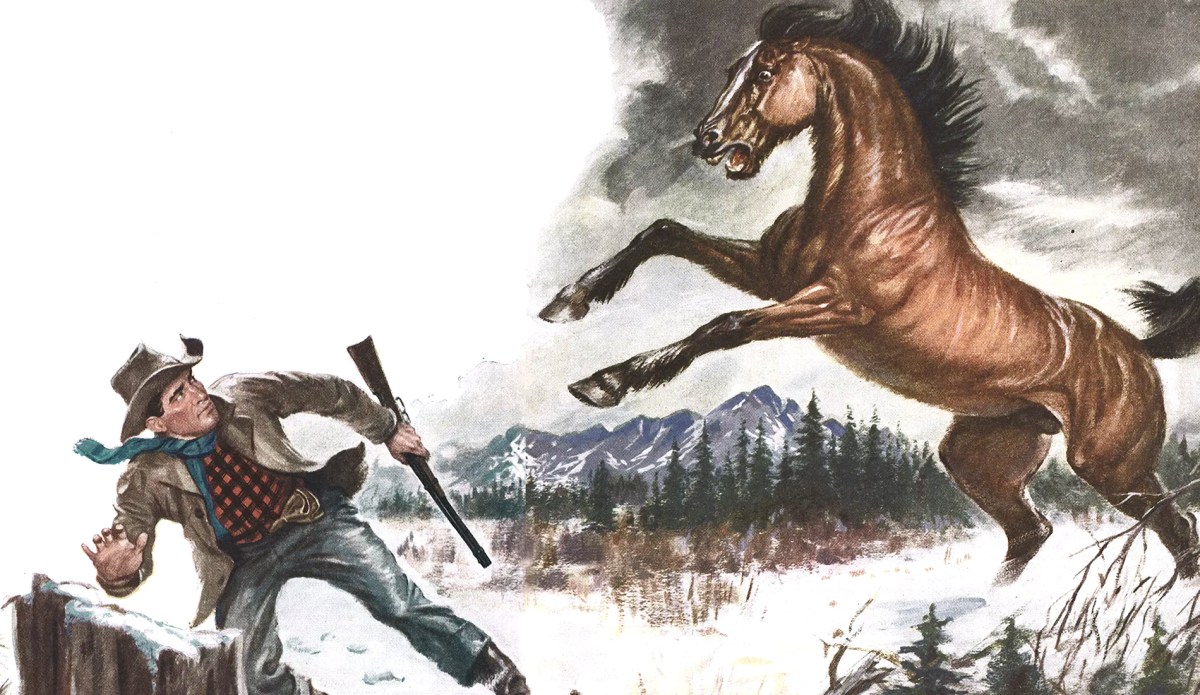Where to Hunt Ducks: 4 Underrated States for Freelance Waterfowlers

It can be tough out there for the freelance duck hunter. Modern waterfowl migrations (and the weather that drives them) are unpredictable, there’s tough competition on many public marshes, and private ground is often locked up by locals or outfitters.
I’ve been lucky to hunt ducks and geese across much of the country, plus I’ve had the opportunity to interview traveling waterfowl hunters who have way more experience than I do. I’ve learned two key points from those experiences: there’s still a ton of great hunting to be had out there; and during these tough times, the mobile, versatile, and opportunistic hunters are most successful.
This is all to say that if you want to shoot ducks consistently throughout the season, you’re going to have to hunt where the ducks are (not where you want them to be), and that often means hitting the road.
But where should you chase the migration to? Almost everyone will tell you to go to Arkansas or North Dakota. While those two states do offer great hunting opportunities (though I’d contend North Dakota is the much better option for the DIY hunter) there are a lot of other great states to consider. So if you want to avoid the hunting pressure (at least most of it), hunt new waters, and chase fresh birds, consider a trip to one of the following states. And then employ these tips and tactics when you get there.
Underrated Duck Hunting States
Oregon
Washington state seems to be getting a lot of publicity in the waterfowl hunting world these days, but don’t overlook the next stop along the Pacific flyway — Oregon. I’ve never hunted Oregon, but veteran freelance outdoor writer and tv show host Scott Haugen lives and hunts there, and each fall I find myself living vicariously through him.
“Oregon is one of the most underrated and overlooked waterfowl hunting spots in the country,” Haugen says. What’s cool about Oregon is it has three distinct waterfowl hunting habitats: the coast, Willimet Valley, and Eastern Oregon.
Coastal hunts obviously offer great sea duck hunting, but there’s also the opportunity to pursue what is perhaps the best wigeon hunting in the country, according to Haugen. As wigeon migrate down the Pacific flyway they stop in bays and estuaries along the Oregon coast, sometimes never flying farther south to California. Haugen is seeing more and more Eurasian wigeon, which are rare ducks for most of us. If you’ve got a reliable boat and are cautious around the tides and weather, you can get in on this action as a nonresident.
The Willmet valley is mostly private agricultural land (think ryegrass capital of the world). Getting permission on a field here will be really tough (maybe impossible), however Haugen says that there are good opportunities for freelance hunting in rivers and sloughs throughout the valley, where ducks roost and loaf.
“We’ve had some pretty mild winters the last three years so the grass growth has been good,” Haugen says. “It’s nothing to see several flocks of wigeon a day of 10,000 in each flock… the rivers and sloughs can be really good especially later in the season when water levels rise, then you just have a lot of access to a lot of those birds.”
East of the Cascades you’ll find plains and high desert and more public access. Do your research on the national wildlife refuges in this region, and you can discover some great hunting, Haugen says.
A nonresident coming to Oregon would be wise to consider a day or two of guided hunts for sea ducks and then a few more days of freelance hunting. For freelance hunting Haugen recommends starting with the Sauvie Island Wildlife Area which is a 15-mile-long island in the Columbia River. There’s a special permitting process for the island, so do your research ahead of time. If you’re geared up with a good boat, consider coastal bay hunts. If you’re more of a walk-in type or paddle-in hunter, then dig into wildlife refuges in the East. Haugen says a good time to be in Oregon for the versatile duck hunter is around the third week of December or a little later.
South Dakota
No one would argue against the fact that South Dakota is an excellent state for waterfowl hunting. But I’ll make the case here that it’s underrated among nonresidents because: 1) North Dakota seems to get all the attention; and 2) Nonresidents need to apply for a permit in South Dakota. The permitting system works a lot like a big game tag lottery and it is a bit complicated.
You need to know the region you intend to hunt ahead of time and the type of ground you want to hunt (public or private). You also need to select a timeframe to hunt, though after you successfully draw you can change your dates. I think these complications weed out a lot of freelance hunters. But the odds of drawing are actually pretty good, and depending upon what you apply for, you’ll draw more often than you don’t.
When you do draw a permit, you’ll find endless public hunting opportunities across the state. If you are driving through the state during the migration, you’re bound to see big waves of ducks working grain fields. But for a first-time non-resident hunter, it’s better to not get distracted by those potential field hunts (you can bet that residents and outfitters will be on those right quick). There are innumerable walk-in areas and waterfowl production areas that are loaded with little cattail marshes, potholes, and sloughs. Focus on those. For targeting divers, there are also some big lakes, plus the Missouri River cuts through the center of the state.
If you don’t have the proper gear to hunt big water, I recommend using onX to find an area with a variety of publicly accessible lands that you can easily scout from the truck and then hike into. Make sure this area is off the beaten path and not near a large town. Sloughs and marshes that require you to schlep a good distance off the road will likely be overlooked by other hunters. With a lightweight decoy setup and a good retriever, you’ll be able to hunt potholes and sloughs to your heart’s content. Arrive from mid-October through mid-November and you’ll find plenty of ducks.
Minnesota/Wisconsin/Iowa
This isn’t a state, but rather a region around the Upper Mississippi River Wildlife Refuge, which is the Midwest’s waterfowl hunting gem. To be fair, this stretch of the river is anything but a secret. There’s a ton of hunting history here (it’s the setting for the “day the duck hunters died” during the Armistice Day storm of 1940) and there are plenty of local river rats who still hunt it hard today.
But this area is so sprawling that there’s great opportunity for a freelancer, despite local pressure. There are endless shallow backwaters along the river to explore and there’s plenty of big water out there, too (Lake Winnieshek, for example, is almost two miles wide in places). Besides the main river itself, there are a bunch of tributaries that drop in from the east and west that can also offer excellent hunting.
The coolest thing about this area is the number of diverse species that migrate through. During late October to the first part of November it’s not uncommon to shoot mallards, divers, gadwall, teal, wood ducks, and geese — all on the same hunt. The steep river bluffs, lit up with fall colors, are a sight to behold.
Pool 9 is a legendary canvasback hunting location as the birds migrate down the river and stop here to feed on wild celery. But just like any other flight, hitting a good canvasback hunt all depends on timing.
Freelance hunters planning to travel to this region should plan on being opportunists. This is not an ideal location for the greenhead-only guy. You’ll need a trustworthy shallow-water boat and you’ll also need to do careful research. There are specific hunting rules (and some no-hunting areas) within the refuge. There are also plenty of hazards out on the river. And you need to be cognizant about which state you’re hunting in and which license you have. It’s easy to cross border water here without knowing it.
Maine
I think Maine is both underrated and overrated. It’s well-known as a go-to destination for guided sea duck hunts. And while a Maine sea duck hunt should still qualify as a bucket-list trip for the traveling waterfowler, it’s also true that sea duck hunting here has declined greatly since its glory days.
However, there’s still a lot of great gunning to be had. Besides the big ticket species like eiders, longtails, and scoters, you’ll also find flocks of bufflehead and goldeneye working Maine’s rocky coastlines and islands. If you’re an experienced diver hunter, you’ll be able to find success here right out of the gate. Just be extra careful with the weather and the tides, which bring ripping currents.
There are also a ton of coastal marshes and estuaries that draw black ducks and mallards. These hunts will feel a lot more familiar to most duck hunters.
If you have your heart set on sea duck hunting, I recommend going with an outfitter who will have the right gear and the knowledge to keep you safe. But after a day or two of guided action you should definitely try some freelancing for divers and puddle ducks with your own setup.
While you probably won’t see big mobs of greenheads and black ducks, you will find that the locals here are awesome, the seafood is unbeatable, and the scenery is gorgeous. December is the right time to consider hunting the coast.
Use Digital Mapping to Narrow Your Hunting Area
Once you’ve picked a region, it’s time to do some in-depth digital scouting. Obviously, you must check out the local regulations and season dates you’ll be dealing with. Beyond that, you should use digital mapping apps to identify key spots to check out once you get there.
When hunting big marshes or rivers, start by pinpointing boat launches and hazards. Then scan for places to scout in person. Many times you can scout areas from the road by finding a high point and glassing. So use topo features to find high spots that will give you a good view. You probably won’t be able to see exactly where the ducks are going from here, but it will give you a jumping off point.
Then start drilling down to specific spots. What you’re looking for all depends on when you’re hunting and the species you’re targeting, but generally speaking it’s smart to pin a handful of hard-to-reach areas. Today, everyone and their brother has a boat with a mud motor. So just know that if you can boat in there, so can everyone else. I consider a “hard to reach”spot to be a place that requires you to hike away from the boat or truck or drag a canoe/kayak.
Use mapping timeline features to do recon on water levels and cover throughout the previous seasons. What looks like a dried up oxbow one year could be a shallow-water honey-hole the next. Use the U.S. drought monitor website plus timeline map data to estimate real-time water levels.
More Tips for Finding Ducks on Public Water
Scout at sunrise. When I get to a new place that I know will have hunting pressure, I like to spend the first full morning scouting. If you go out at sunrise, you can see where all the other dudes are hunting, hear who’s getting shooting, and hear who isn’t. This process will show you all the places not to go. With the rest of the morning and evening you can identify spots that have birds and don’t have other hunters.
Hike in. Everyone likes to scout from their truck or boat. I’ve found that when you’re hunting walk-in style, it pays to do a little hiking during the scout, too. Find a general area where ducks seem to be frequenting and then mark the public sloughs and potholes that can’t be seen from the road. During a midday scouting session, hike up the nearest hill and glass those spots. You might be surprised by how many ducks you find.
Hunt in small groups. It’s way easier to find a good hunt for two people than it is for eight gunners. These days, the freelance duck hunting lifestyle is best lived by small groups of buddies, not big crews. If you’re set on traveling with a big group, split up into teams and hunt separately. You’ll find that everyone ends up shooting more ducks.
Scout more than you hunt. After a long road trip everyone wants to get out and start hunting. And while it’s possible to roll up on stellar hunting spots when you first arrive, it’s much more likely that you’re going to have to put in more windshield time scouting. Remember you’re going to have to find multiple honey holes if you want to have more than just one good day of shooting during your weeklong trip.
If you have a good morning hunt then scout right after for the next day (you can take naps and have lunch in the afternoon). If you’re having a slow hunt one morning, just call it quits and get right to scouting. Spend more time exploring than waiting around in the blind for one or two ducks to fly by.
Understand the difference between roosts, feeds, and loafing spots. When you find ducks, pay close attention to what they’re doing. Are they feeding? If so, can you tell what they’re feeding on? Did they just feed in a field and are now coming back to a loaf? Or maybe they’re returning to their evening roost? Answering these questions will help you put together a good hunt the following day.
Don’t die. Each region of waterfowl country has its own nuances and dangers. Some of these can be obvious — like a raging storm and crashing waves along the coast of Maine. But others are more subtle — like a riverbottom that drops off from 2 feet to eternity. So do as much internet recon on a place as possible. Then when you get there, watch what the locals do, and what they don’t do. Put that duck-slayer ego to the side and don’t be afraid to ask a few questions about conditions and hazards. It could save your life.
Read Next: Expert Tips and Tactics for Decoying Ducks Close
Final Thoughts on Where to Hunt Ducks
Simply shooting limits far from the point of a good duck hunting trip. When you chase ducks around the country, you’ll see amazing scenery, meet some wild characters, and witness a truly remarkable natural phenomenon. Never take for granted that in today’s modern age, we are still able to behold a cross-continent migration of millions of waterfowl, which has occurred since time immemorial. And to be a part of that phenomenon, at least in some small way, is what freelance duck hunting is really all about.
Read the full article here









